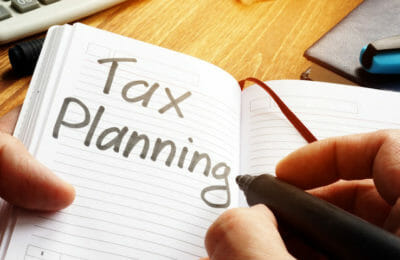Do you know all about the Plastic Packaging Tax?
It’s something that was first mooted in the 2017 Budget. The tax itself was unveiled in 2020, passed into law in 2021, and finally took effect effect in April 2022.
If your business makes or imports plastic packaging, you need to know about the levy. In this post, we tell you what you need to know about it.
Who is affected by the Plastic Packaging Tax (PPT)?
If you make or import plastic packaging with less than 30% recycled plastic, you have to pay the charge. Importantly, if you import plastic packaging that already contains goods, you are also affected. For example, if you import items such as fizzy drinks or food in plastic packaging, you have to pay the tax. However, the tax applies only to the packaging itself.
Likewise, if you make or import plastic products designed as single-use packaging products, you have to pay PPT. These include items such as plastic bin liners, nappy sacks and disposable cups.
How much is PPT?
The tax is levied at a rate of £217.85 (from 1 April 2024) per metric tonne of plastic packaging that contains less than 30% recycled material. Plastic includes bioplastics, such as biodegradable and compostable products.
How does the Plastic Packaging Tax work?
Importers and manufacturers are primarily liable for PPT. However, if you are in the supply chain and you know (or ought to know) that the tax has not been paid, then you can be made liable for the charge.
If you import or make more than 10 tonnes of plastic packaging within a 12-month period, you have to register for PPT. Similarly, if you expect to make or import more than 10 tonnes of plastic packaging within the following 30 days, you must register. This holds true, even if you won’t have to pay any tax.
How often do I have to report?
Once registered for the Plastic Packaging Tax, you will need to make quarterly returns.
Are there any exemptions?
You don’t have to pay PPT on items with 30% or more recycled plastic.
Also, if the packaging is for export, you can defer payment for 12 months as long as the direct export condition is met. In other words, if you directly export items, then you don’t have to pay PPT. If the items aren’t exported within 12 months, then you do.
You also don’t have to pay if an item is intended primarily for storage, rather than just packaging. This includes things like DVD and spectacles cases.
Likewise, if the plastic is integral to goods themselves, then you don’t have to pay PPT. This includes items like tea bags and printer cartridges.
Other exemptions include:
- Packaging primarily designed to be re-used for the presentation of goods
- Transport packaging on imported goods
- Packaging used in air, ship and rail stores
- Immediate packaging of medicines (but not veterinary medicines)
Plastic Packaging Tax record keeping
If you have to register for PPT, you need to keep detailed records. These will include the weight of materials used to make the packaging, the weight of exempted packaging, plus proof of recycled content. The latter is particularly important – plastic packaging will be assumed to not meet the recycled content test unless it can be proven.
A word of warning (again!)
Even if you don’t make or import plastic packaging, you need to be careful. If you buy plastic packaging on which the tax has not been paid, you could be held liable. So make sure that the tax is properly accounted for!
Need help with PPT?
If you need any help or advice with the Plastic Packaging Tax, please speak to your THP account manager. They’d be delighted to advise you. Not a client? Maybe it’s time to expect more from your accountants!
About Jon Pryse-Jones
Since joining THP in 1978, Jon Pryse-Jones has been hands on with every area of the business. Now specialising in strategy, business planning, and marketing, Jon remains at the forefront of the growth and development at THP.
An ideas man, Jon enjoys getting the most out of all situations, “I act as a catalyst for creative people and encourage them to think outside the box,” he says, “and I’m not afraid of being confrontational. It often leads to a better result for THP and its clients.”
Jon’s appreciation for THP extends to his fellow team members and the board. “They really know how to run a successful business,” he says. He’s keen on IT and systems development as critical to success, and he continues to guide THP to be at the cutting edge and effective.
Read more about Jon Pryse-Jones











